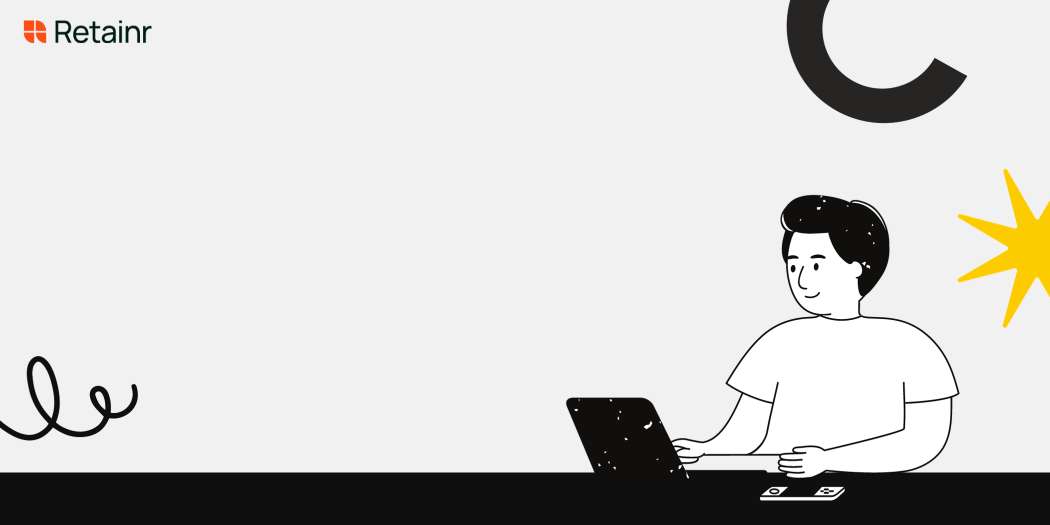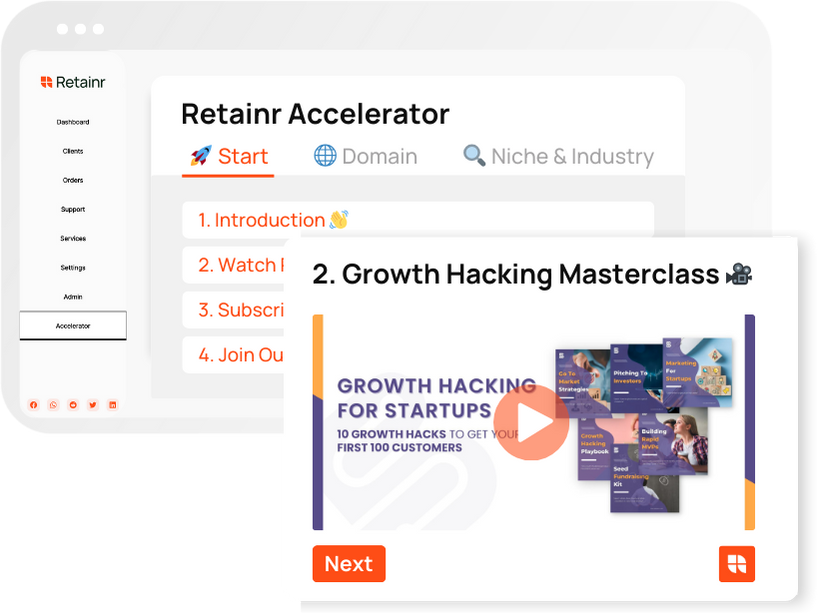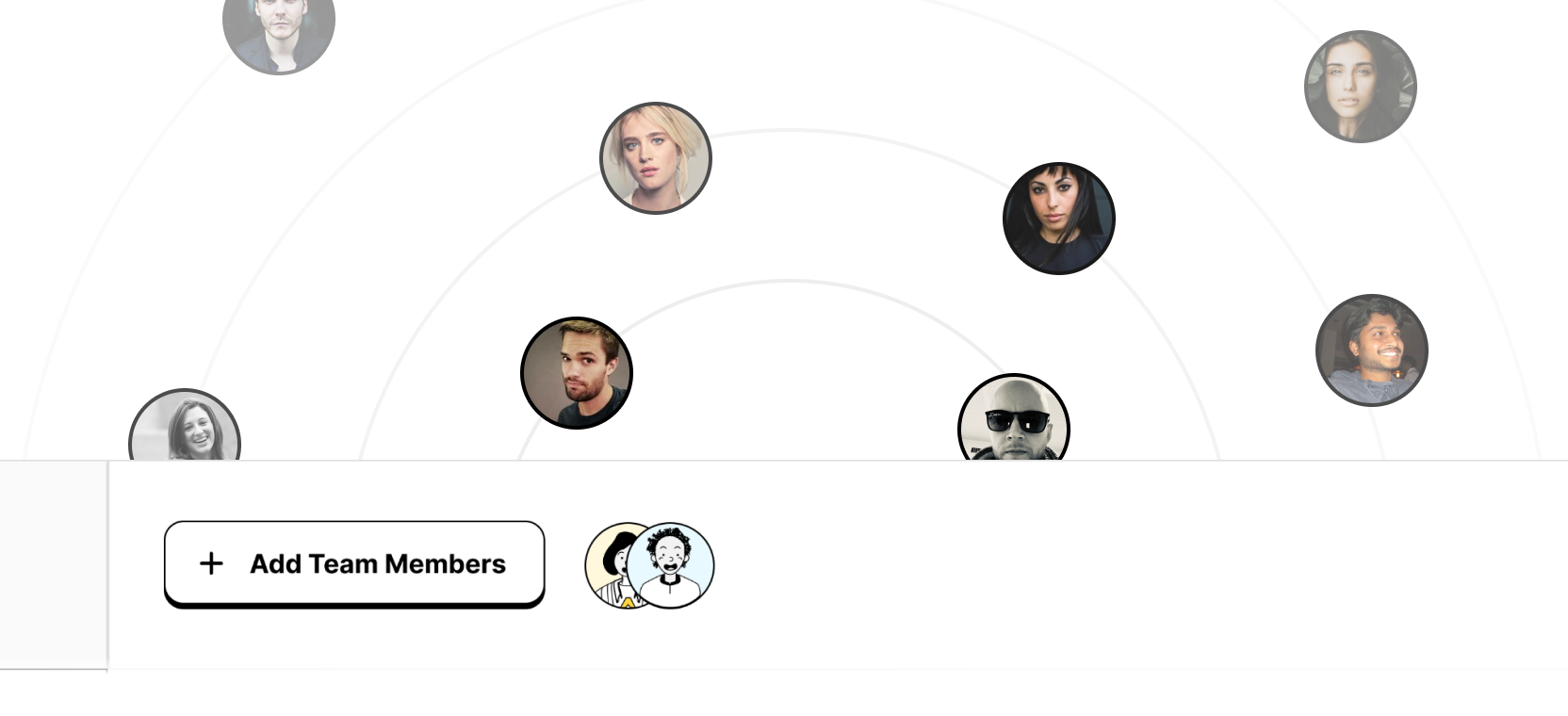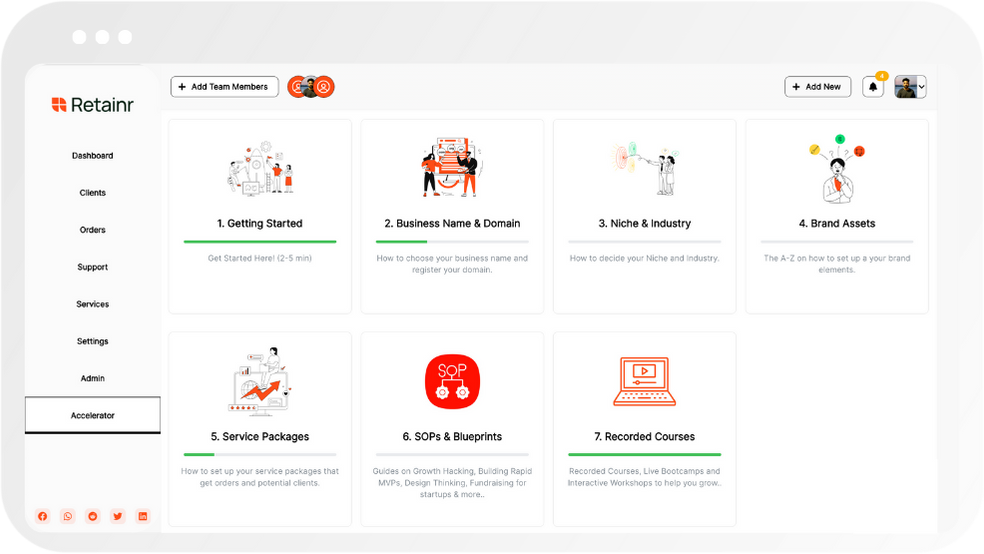
7 Essential Ways Agencies Can Leverage Virtual Reality in Marketing
Build with Retainr
Sell your products and services, manage clients, orders, payments, automate your client onboarding and management with your own branded web application.
Get Started1. What are the seven essential ways agencies can leverage virtual reality in marketing?
The Seven Essential Ways VR Can be Utilized in Marketing
Virtual Reality (VR) offers an immersive experience allowing marketers to engage with their audience in innovative ways. These seven methods prove vital to leverage VR in marketing strategies:
- Product Demonstration: VR provides a lifelike demonstration of products, engaging customers more effectively than traditional advertising.
- Virtual Tours: Marketers can bring their audience on a virtual tour of real-world places such as retail stores or manufacturing facilities.
- Interactive Ads: VR ads deliver a unique, interactive experience, increasing brand recall and engagement rates.
- Training Programs: VR can be used to deliver interactive and immersive training materials for products or services.
- Customer Experience Enhancement: VR can cultivate more memorable customer experiences, increasing loyalty and satisfaction.
- Storytelling: VR's immersive nature allows marketers to tell compelling brand stories, drawing audiences in and helping them understand a brand’s message.
- Data Acquisition: VR can track customer interactions, gathering vital data to analyse consumer behaviour.
Impact of VR on Marketing
To understand how VR transforms marketing, here is a simple table summarizing its impact:
| Aspect | Impact |
|---|---|
| Customer Engagement | Increases as customers can interact with products prior to purchase |
| Brand Awareness | Enhances due to unique VR ads and experiences |
| Conversion Rates | Improves as customers are more likely to purchase after a heightened VR experience |
| Data Analysis | Improves due to precise tracking of user behaviour |
Conclusion
In a world driven by technology and innovation, VR emerges as a powerful tool in the world of marketing. By using VR in the ways listed, agencies can foster higher engagement, generate greater brand awareness and boost conversion rates, making VR not only a trendy tool, but a key component in modern marketing strategies.
2. How can virtual reality be effectively used in a marketing strategy?
Immersive Experiences
Virtual reality can be an integral part of a marketing strategy by creating immersive experiences. Virtual tours of properties, hotels, or even entire cities can be built with VR technology. This means potential buyers or clients can truly 'experience' the product or location from the comfort of their home. This is particularly useful in industries like real estate, tourism, and hospitality, where the product is often intangible or in a different location. This not only enhances customer experience but also aids the decision-making process by providing users with a comprehensive understanding of the product.
Interactive Demonstrations
Another effective use of virtual reality in marketing is through interactive demonstrations. This could involve virtual test drives for cars, virtual use of tech gadgets, or even VR experiences of wearing fashion items. Below is an example of how it can be used:
| Product | VR Demonstration |
|---|---|
| Car | Virtual test drive. |
| Smartwatch | Experience of how the interface works. |
| Fashion Items | Visualize how the clothing item would fit and look. |
These demonstrations allow consumers to try before they buy, reducing the risk associated with purchasing and increasing overall customer satisfaction.
Engaging Ads and Campaigns
- Brand Storytelling: VR can be used to tell engaging stories about a brand, its values, and its products. This immersive storytelling can create deeper emotional connections between customers and brands.
- Product Launches: New products can be launched in an exciting, interactive way using VR. This could involve a virtual reality event, demonstration, or experience.
- Branded Games: Creating engaging, branded VR games can increase brand engagement, recall, and customer loyalty.
By utilizing engaging VR ad campaigns, brands can effectively stand out in a crowded market and engage their target audience in a unique and memorable way.
3. How does incorporating virtual reality into marketing benefit an agency?
Enhanced Customer Engagement
One of the significant benefits of incorporating virtual reality into marketing is that it enables agencies to provide their audiences with immersive and interactive experiences. Unlike traditional forms of marketing, virtual reality engages users by enabling them to interact directly with a product or a brand. This kind of customization leads to better customer engagement.
- Increased Interaction - Virtual reality allows customers to test and experience products before making a purchase.
- Improved Customer Experience - By taking customers on a virtual tour of a company or its offerings, agencies can provide an immersive and engaging brand experience.
Competitive Advantage
Another advantage of using virtual reality in marketing is that it gives the agency a competitive edge over others. By adopting cutting-edge technology, agencies can position themselves as forward-thinking and innovative, which can attract more clients and retain existing ones.
| Features | Benefits |
|---|---|
| Innovative Technology | Attracts more clients as it's considered cutting-edge. |
| Differentiation | Sets the agency apart from competitors who don't use virtual reality. |
In-depth Data Collection
Virtual reality also proves beneficial for agencies by acting as a robust data collection tool. Since users interact with VR content, agencies can analyze their behavior, preferences, and reactions to improve their marketing strategies.
- Real-time Feedback - Immediate feedback can be obtained about a product or campaign, helping to make quick adjustments.
- User Behavior Analysis - Valuable data can be collected about users' preferences and purchasing behaviors.
4. Can virtual reality be used to enhance customer engagement in marketing?
Enhancing Customer Engagement Through Virtual Reality in Marketing
Virtual reality (VR) can be a powerful tool for maximizing customer engagement in marketing. This advanced technology allows brands to immerse their customers in a fully interactive digital world, resulting in a more engaging, novel, and memorable brand experience. Here are three main ways VR can enhance customer engagement:
- Interactive storytelling: VR enables brands to tell stories in a more captivating and interactive way. Instead of just watching a story unfold, customers can actually participate in the brand narrative, which increases their level of engagement.
- Product demonstrations: VR can be used for virtual product demonstrations, allowing customers to see and interact with products in a simulated environment. This element of interactivity gives customers a clearer understanding of the product and makes the shopping experience more engaging.
- Virtual shop: Online shopping can be made more interactive and personalized with the help of VR. Virtual shops or showrooms can replicate physical stores, allowing customers to roam around, interact with products, and make purchases, all from the comfort of their homes.
Companies that have incorporated VR into their marketing strategy have seen a notable increase in their customer engagement levels. The table below exemplifies this trend, listing a few companies and the impact of their VR initiatives:
| Company | VR Initiative | Impact on Customer Engagement |
|---|---|---|
| IKEA | Virtual kitchen experience | Increased online shop visits and sales |
| Tommy Hilfiger | Virtual runway shows | Boosted online traffic and sales |
| Mercedes-Benz | Virtual car models for test drives | Enhanced customer interaction with product leading to increased purchases |
In conclusion, Virtual Reality can vastly enhance the customer experience by making it more immersive and interactive. Therefore, by leveraging this technology, brands can significantly boost customer engagement, foster loyalty, and ultimately drive growth.
5. What is the impact of virtual reality on the overall effectiveness of a marketing campaign?
The Influence of Virtual Reality on Campaign Effectiveness
Virtual reality (VR) is a game changer for marketing campaigns due to its immersive nature, providing agencies a unique advantage in creating impactful and persuasive digital experiences. The following outlines how the adoption of VR can enhance the effectiveness of a marketing campaign:
- Enhanced Customer Engagement: VR establishes an interactive experience that engages customers like never before. This transformative technology involves customers as active participants, stimulating not only their sense of sight but also touch and hearing, leading to more memorable marketing experiences.
- Influence on Purchasing Decision: By offering customers an opportunity to try a product before buying, or virtually visit a place they intend to travel, VR can stimulate purchase intent and encourage positive buying decisions.
- Creating Emotional Connection: VR storytelling can trigger emotions, leading to stronger connections. A well-crafted VR experience can evoke empathy, excitement or curiosity, emotions that are key to influencing consumer behaviour.
A Comparative Study between Traditional and VR Marketing
To understand the impact of VR on marketing campaign outcomes, a comparison with traditional marketing methods can be insightful. The following table presents a comparison on some key parameters:
| Traditional Marketing | VR Marketing | |
|---|---|---|
| Customer Engagement | Linear and Passive | Interactive and Engaging |
| Purchase Influence | Limited to Audio/Visual Stimulation | Try Before Buying |
| Emotional Connection | Depends on Creative/Content | VR Storytelling can Trigger Strong Emotions |
Increased ROI with VR Marketing
Due to its immersive and engaging nature, VR marketing has shown to significantly increase the return on investment (ROI) for marketing campaigns. These are some underlying reasons:
- Higher Engagement Rates: As VR experiences are more engaging, they often lead to higher conversion rates and increased sales.
- Brand Recognition: Innovative usage of VR can create a buzz in the market, resulting in increased brand visibility and recall.
- Competitive Advantage: Adoption of VR exhibits a brand's commitment to leveraging advanced technology, providing an advantage in increasingly competitive markets.
6. What should be considered when incorporating virtual reality into a marketing strategy?
Understanding Your Audience
Before integrating virtual reality into your marketing strategy, a clear understanding of your target market is essential. Not all consumers own or are comfortable using VR technology and it is up to the marketer to research, understand and cater to these differences. Consider the following factors:
- Demographic: Different age groups interact differently with VR technology. Younger audiences may be more receptive and tech-savvy to VR than older audiences.
- Socio-economic factors: Always consider that not all consumers might be able to afford VR equipment.
- User Experience: Remember the technology may be new to many. Ensure your VR content is user-friendly and easy to navigate.
Virtual Reality Promotion
Introducing VR into your marketing strategy means nothing if your target audience is not aware of it. Properly promoting your VR content can determine the success of your marketing efforts. Consider employing these strategies:
- Use social media platforms to generate buzz and excitement around your VR content.
- Offer demonstrations in-store or in a public area so people can understand how to interact with your VR technology.
- Consider partnerships with other brands that can cross-promote your VR tech.
Quality of Virtual Reality Content
| Consideration | Description |
|---|---|
| Engagement | Ensure your VR content is engaging and provides value to the user. This could be through interactivity, stunning visual effects or unique experiences only possible through VR. |
| Relevance | Your VR content should be relevant to your product and your brand. Avoid gimmicky content that provides no benefit to the consumer or does not fit with your brand image. |
| Usability | Ensure your VR content is easy to use. A complex interface or difficult navigation can turn users away from your product, regardless of how visually impressive it might be. |
7. How can virtual reality technologies make a marketing campaign more interactive?
Making Campaigns More Interactive with VR Technologies
VR technologies significantly enhance the interactivity of marketing campaigns. This is achieved, firstly, through creating immersive experiences. With VR, customers can explore products or services virtually, providing a deeper understanding than traditional marketing techniques. Secondly, VR can simulate real-life scenarios which involve the product, enforcing a stronger connection and desire in consumers. And lastly, VR marketing can provide highly detailed insights since customers' reactions can be captured and evaluated in real-time.
- Creating immersive experiences: Virtual reality is an ideal tool for creating immersive experiences. Brands can create virtual stores, allowing customers to browse and interact with products virtually. This interactive experience makes the product or service memorable.
- Simulating real-life scenarios: Using VR, brands can simulate real-life experiences, demonstrating how their product will fit into the consumer's lifestyle. This not only promotes interaction but it also enables the brand to highlight key features and benefits in an engaging way.
- Providing detailed insights: The interactive nature of virtual reality provides brands with detailed behavioural data from users. By analyzing how consumers interact with the virtual experience, brands can gain insights to fine-tune their marketing strategy.
| Campaign Method | Interactivity Level |
|---|---|
| Traditional Print Campaign | Low |
| Online Social Media Campaign | Medium |
| Virtual Reality Campaign | High |
In summary, virtual reality technologies offer numerous opportunities for brands to make their campaigns more interactive. By capitalizing on these advantages, brands can bring unforgettable, meaningful experiences to consumers, thereby differentiating themselves from competition and driving customer engagement.
8. How is virtual reality changing the modern marketing landscape?
Revolutionizing Product Visualization
First and foremost, virtual reality (VR) is transforming the way products and services are visualized in marketing. Traditional 2D images and descriptions no longer suffice. Through VR, customers can experience the products before making a purchase decision. For instance, automobile companies offer virtual test drives, while furniture outlets allow consumers to 'place' the furniture in their homes virtually.
- Automobile Industry: VR Test Drives
- Furniture Retailers: Virtual Room Setup
- Real Estate: Virtual Property Tours
Enabling Immersive Storytelling
Virtually reality is ushering in a new era of immersive storytelling in the marketing landscape. Rather than simply telling customers about the brand, VR allows them to experience it. They can 'travel' to the places where the ingredients for their favourite products are sourced, 'meet' the artisans who handcraft their purchased items, or 'witness' how their preferred brands are making a difference in societal issues.
| Industry | VR Experience |
|---|---|
| Food and Beverage | Virtual Farm or Factory Tours |
| Arts and Crafts | Virtual Artisan Meetups |
| Social Entrepreneurship | Virtual Impact Journeys |
Enhancing Consumer Engagement
Lastly, virtual reality offers new opportunities for deeper and more engaging interactions with consumers. VR experiences can become events in their own right, and consumers are often excited to engage with them. For example, a brand can hold a virtual concert to release a new music album, conduct virtual reality game tournaments, or set up a virtual pop-up shop to launch a collection, all of which encourage active participation from consumers.
- Virtual Release Parties or Concerts
- Virtual Reality Game Tournaments
- Virtual Pop-up Shops
9. Are there any successful case studies of agencies leveraging virtual reality in their marketing strategies?
Impressive Case Studies of Agencies Using VR Marketing
Many successful companies have started to leverage virtual reality in their marketing strategies to offer extraordinary experiences to their clients. This technology allows consumers to completely immerse in a different world that completely surrounds them, providing a 360-degree view of the product or service. Here are a few examples:
- Mercedes: The luxury car manufacturer built a VR campaign for their potential buyers to experience the high-level comfort and advanced features of their vehicles. The "Mercedes VR for Cardboard" app gives the user an immersive tour of the Mercedes E-Class vehicle.
- Tommy Hilfiger: The well-known fashion brand employed virtual reality for their Fall 2015 fashion show. Shoppers who visited the physical store were offered Samsung GearVR headsets with a virtual reality view of the runway show, creating an immersive shopping experience.
- The New York Times: The print media giant launched "The Displaced", a VR film available on the NYTVR app, taking users on a journey following the lives of three children displaced by war.
Benefits of VR Campaigns
VR marketing brings several benefits which traditional marketing methods can't. It's clear from the success of these companies that virtual reality strategies can significantly improve consumer engagement levels and boost brand recognition.
| Benefit | Explanation |
|---|---|
| Immersive Experiences | VR delivers a completely immersive brand experience, making the product memorable. |
| Increased Engagement | Presenting a virtual reality experience grabs the consumer's attention, piquing their interest and leading to higher engagement levels. |
| Brand Differentiation | By integrating VR in their marketing strategy, brands can set themselves apart from competitors and establish themselves as technologically advanced. |
Future of VR in Marketing
With the right execution and creative presentation, virtual reality could become a regular feature in the marketing landscape. Its use is currently on the rise, with increasingly more businesses experimenting with this technology. Brands and agencies considering VR for their marketing strategy in the future will look to these and other successful case studies as inspiration, taking into account what worked well and what could be improved.
10. Can virtual reality be used both in online and offline marketing, and if so, how?
Utilizing VR in Online Marketing
Virtual Reality (VR) technology can significantly enhance the experience of online marketing. This is mainly due to its immersive nature, allowing customers to engage with the product or service in a 3D environment.
- Demos and Tutorials: VR can create interactive demonstrations or tutorials, giving customers a hands-on experience.
- Virtual Storefronts: Retailers can design their storefronts virtually and allow customers to browse products as if they were in an actual store.
- Ads: VR technology can create interactive and immersive ad campaigns, allowing brands to showcase features that may be missed in 2D advertisements.
Implementing VR in Offline Marketing
In offline marketing, VR technology serves as a tool that can transport users to a whole new world, thereby deepening their connection with a brand.
- Product Testing: Customers can use VR to inspect and use products in a virtual space.
- Marketing Events: Brands can use VR in trade shows, exhibitions and even local community events to create immersive experiences for audiences.
- Store Layouts: VR can be used to design store layouts, allowing companies to experiment with various arrangements to optimize customer flow and interaction.
Comparison Between VR Usage in Online and Offline Marketing
| Online Marketing | Offline Marketing | |
|---|---|---|
| Demos & Tutorials | Provide an interactive and hands-on product experience. | Mainly used in product testing. |
| Virtual Storefronts/Store Layouts | Customers can browse products in a 3D environment. | Enables experimenting with store layouts. |
| Ads/Marketing Events | Facilitates immersive and interactive ads. | Can create immersive experiences at events. |
Conclusion
```htmlVirtual Reality's Role in Modern Marketing
Take a leap into the future with Virtual Reality (VR) and explore its numerous applications in the marketing sector. As tools and technologies advance, marketing tactics also evolve to ensure better interaction and engagement with customers. Here, we discuss seven essential ways marketing agencies can utilize VR to their advantage.
VR Product Demonstrations
VR technology provides businesses with the ability to transport their potential customers into a digital realm where they can interact, experiment, and experience products or services in a virtual environment. This immersive exploration significantly magnifies customers' understanding and appreciation of a product.
VR-Enabled Market Research
Virtual Reality can also elevate traditional market research techniques. Through VR, marketers can gauge consumer reactions in a more detailed and immersive way, leading to more nuanced insights and revealing valuable data about consumer behaviours and preferences.
VR in Advertisements
Creativity has no bounds with VR. Agencies can use this immersive technology to craft realistic and interactive advertisements, providing consumers with a memorable experience and inducing a higher engagement rate.
VR in Storytelling and Brand Awareness
VR also offers a unique way to tell a brand's story. It personalizes the narrative and envelops customers in a brand’s world, enhancing connection and rapport with the consumer.
Virtual Trainings and Onboarding
Companies can use VR to provide virtual training sessions or onboard new employees, delivering an engaging, virtual-first experience right from the start.
Virtual Events and Conferences
The advent of VR technology has given rise to virtual events and conferences, providing access to a wide, global audience by breaking geographical barriers and increasing attendance.
VR in E-commerce
Brands can use VR to present their products in a compellingly realistic digital environment, greatly enhancing the e-commerce shopping experience for consumers.
In embracing these opportunities, marketing agencies can turn forward-thinking ideas into reality with Retainr.io, a whitelabel software that allows you to Sell, Manage Clients, Orders & Payments with Your Own Branded App. Utilize the Retainr.io platform to effectively implement these strategies and experience a tremendous increase in audience engagement and return on investment. Discover more about how Retainr.io can transform your marketing approach with VR today.
```This HTML content focuses on the seven essential ways marketing agencies can leverage Virtual Reality, as well illustrating how Retainr.io is a beneficial tool that can be used in conjunction with these strategies.Boost Your Agency Growth
with Retainr Accelerator
Uncover secrets, strategies, and exclusive blueprints to take your agency's growth to the next level — from marketing insights to effective presentations and leveraging technology.

SOPs, Cheatsheets & Blueprints
Leverage 50+ SOPs (valued over $10K) offering practical guides, scripts, tools, hacks, templates, and cheat sheets to fast-track your startup's growth.
Connect with fellow entrepreneurs, share experiences, and get expert insights within our exclusive Facebook community.
.jpg)

Join a thriving community of growth hackers. Network, collaborate, and learn from like-minded entrepreneurs on a lifelong journey to success.

Gain expertise with recorded Courses, Live Bootcamps and interactive Workshops on topics like growth hacking, copywriting, no-code funnel building, performance marketing and more, taught by seasoned coaches & industry experts.

.jpg)

.jpeg)


